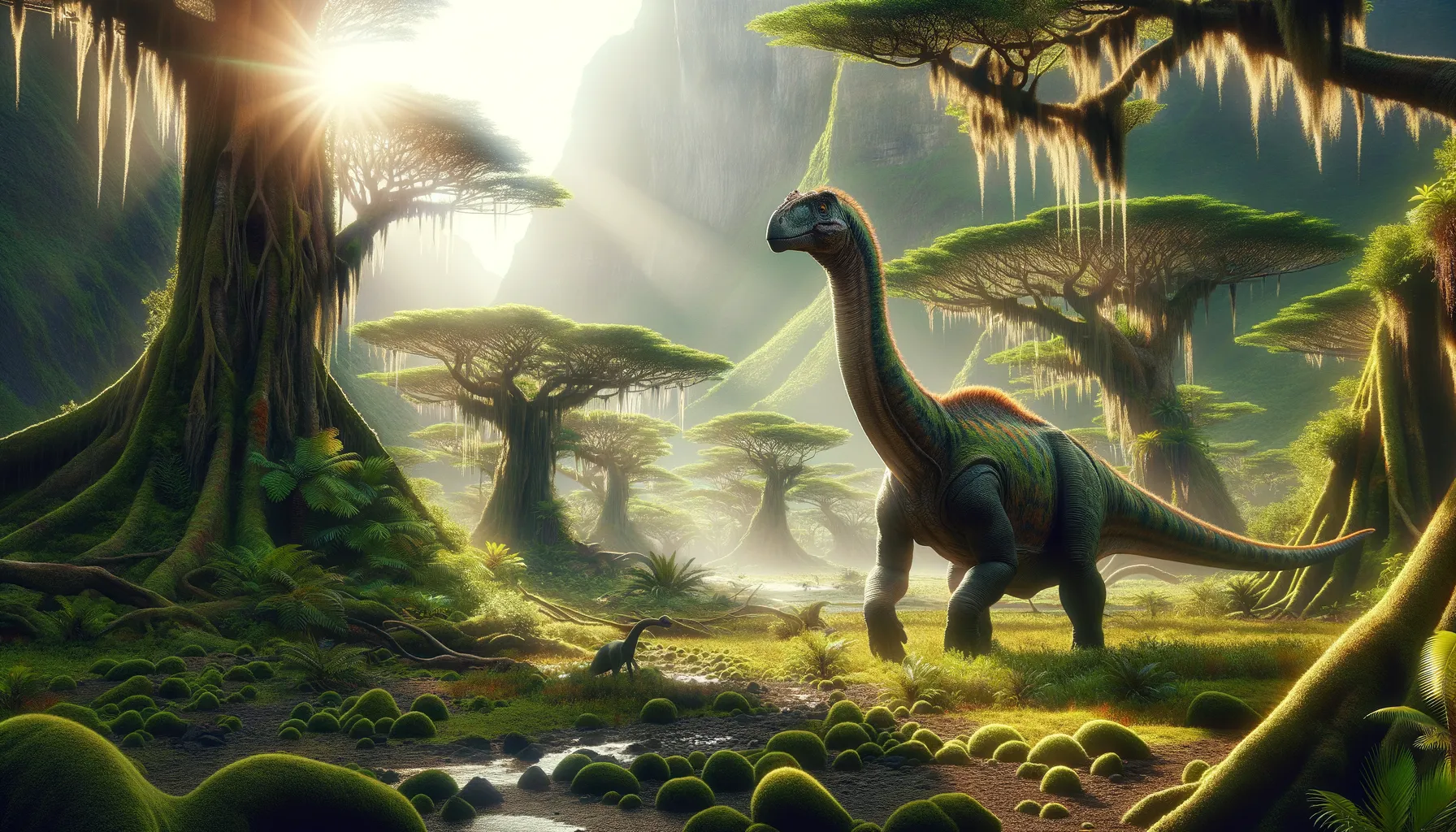
Chebsaurus
A gentle giant of the ancient savannahs.
Period
Cretaceous
Length
Around 30 feet in length.
Height
About 12 to 15 feet tall.
Weight
Approximately 4 to 5 metric tons.
Chebsaurus was a large herbivorous dinosaur that roamed the landscape of what is now North Africa during the Cretaceous period. Known for its relatively large size and long neck, this dinosaur was a fascinating creature highly adapted to its environment. Its discovery added significant insights into the diversity of dinosaur life in Africa and helped paleontologists understand more about the prehistoric ecosystems of the time.
Diet
Chebsaurus was primarily herbivorous, feeding on a variety of plant life available in its terrestrial habitat. This dinosaur would consume leaves, twigs, and possibly fruits, which were abundant in its lush, prehistoric environment.
Hunting
Being a herbivore, Chebsaurus did not engage in hunting activity. Instead, it foraged for plant material and used its height and long neck to reach vegetation that other herbivores could not access.
Environmental challenges
Chebsaurus faced several environmental challenges, including climate changes that could affect the availability of food sources. Predatory threats from larger carnivorous dinosaurs also posed significant risks, requiring it to stay within herds for protection. Water availability might have also fluctuated, impacting its survival during drier periods.
Speed
Moderate pace, not very fast.
Lifespan
Estimated to be around 70 years.
First discovery
First discovered in Algeria in 2005.
Fun Facts
- Chebsaurus is a dinosaur species that lived during the Middle Jurassic period, around 168 million years ago.
- This dinosaur was named after the Chebket Formation in Algeria, where its fossils were first discovered.
- Chebsaurus is known from only a few fossils, mainly parts of its skull and some bones, giving paleontologists a glimpse into its features.
- It was likely a herbivore, eating plants and leaves, much like many other dinosaurs of its time.
- The fossils of Chebsaurus have helped scientists understand more about the diversity of dinosaurs in Africa during the Jurassic period.
Growth and Development
Chebsaurus had a moderately long growth period, reaching full maturity over several years. Its development involved significant changes in size and strength, equipping it to better withstand predation and forage effectively. Young Chebsaurus likely stayed close to their mothers and within protective herds for safety.
Habitat
Chebsaurus primarily inhabited forested and riverine environments rich in vegetation. This allowed it ample food to sustain its large size and provided water sources necessary for its survival. Its habitat was characterized by a mix of open spaces for movement and dense vegetation for food availability.
Interaction with other species
Chebsaurus likely interacted with a range of species, including herbivores in mixed grazing groups and predators. Its large size helped deter most predators, and it could have engaged in mutualistic relationships with other herbivores, sharing grazing spaces and alerting each other to dangers.
Natural lifespan
Chebsaurus had a natural lifespan of around 70 years.
Reproduction
Chebsaurus reproduced by laying eggs, with nests likely constructed in secluded areas to protect from predators. Parental care might have been invested in guarding the nest, ensuring greater survival rates for the young. Hatchlings were precocial and quickly learned to forage.
Social behaviour
Chebsaurus exhibited herding behavior, likely for protection against predators and to enhance foraging success. Within these herds, there may have been complex social structures, including leadership dynamics and cooperative behaviors during raising the young and resource sharing.
Fossil locations
The fossils of Chebsaurus have primarily been found in the Chelif Basin of Algeria. Discoveries within this region have provided a significant glimpse into the Cretaceous period of North Africa. It highlights the area as a key site for understanding dinosaur evolution and diversity in that era.
